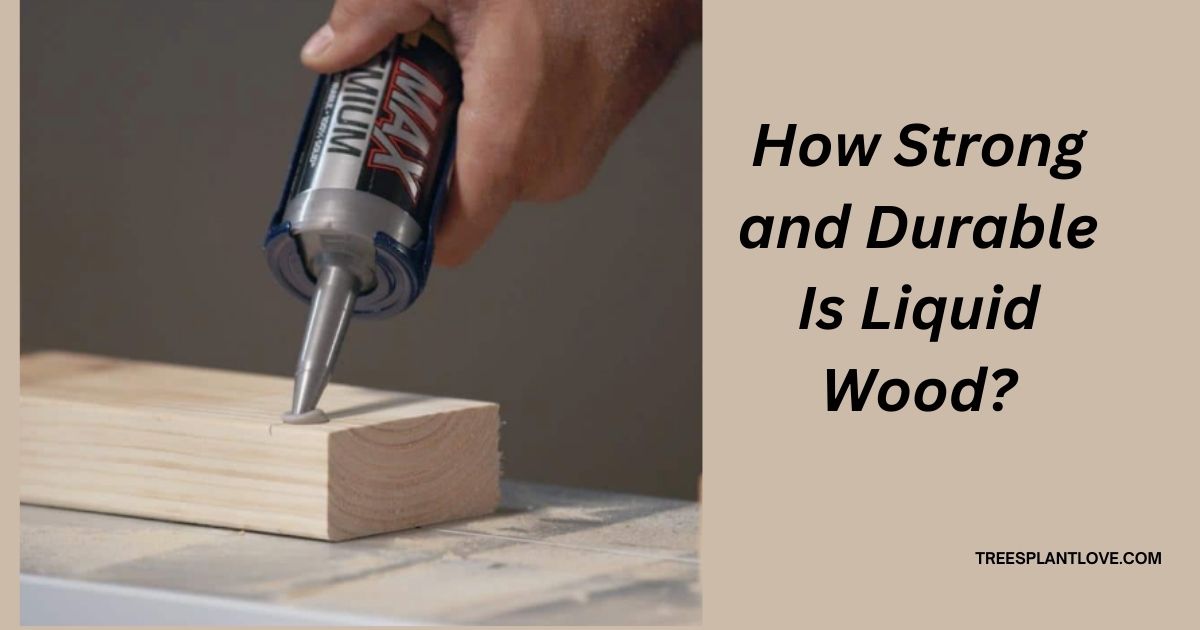
How Strong and Durable Is Liquid Wood? Discover Its Strength and Longevity
How Strong and Durable Is Liquid Wood?: In the world of materials science and sustainable innovation, liquid wood has emerged as an exciting and environmentally friendly alternative to traditional plastics and composites.
Liquid wood is a cutting-edge material made from natural wood fibers that are processed into a liquid form, creating a versatile substance that can be molded and used in a variety of applications. But when it comes to practical use, one of the most important questions that arise is: how strong and durable is liquid wood?
This article dives into the properties of liquid wood, evaluating its strength, durability, and potential applications across industries.
What Is Liquid Wood?
Before we explore its strength and durability, it’s essential to understand what liquid woodactually is. Also known as Lignocellulosic composite material (LCM), liquid wood is a material made from renewable natural resources such as wood fibers, lignin, and other organic substances.
These components are processed into a liquid form, which can be molded into various shapes. This substance offers a unique alternative to synthetic plastics and composite materials because it is biodegradable, non-toxic, and made from natural, sustainable materials.
How Strong Is Liquid Wood?
Strength refers to how well a material can withstand stress, pressure, and external forces without breaking, cracking, or deforming. When it comes to liquid wood, its strength is a result of the combined properties of its key components—lignin, cellulose, and hemicellulose—which are naturally found in wood.
- High Tensile Strength: One of the most notable features of liquid wood is its impressive tensile strength. Tensile strength refers to the ability of a material to resist breaking under tension or stretching. Liquid wood, due to the molecular structure of cellulose, demonstrates tensile strength comparable to that of some synthetic plastics. As a result, it can be molded into solid products that retain their shape under normal usage conditions.
- Impact Resistance: Liquid wood has also shown a high level of impact resistance. This means that objects made from liquid wood can withstand mechanical impacts—such as drops or shocks—without fracturing. This is particularly useful for applications where durability and the ability to absorb force are important, like in automotive or packaging industries.
- Adaptable Strength: The strength of liquid wood can vary depending on how it’s processed and the intended application. For example, in some cases, it can be reinforced with additional fibers or chemicals to enhance its strength for heavy-duty applications. Conversely, it can be tailored to be lighter for use in consumer goods or packaging materials.
How Durable Is Liquid Wood?
Durability refers to the material’s ability to withstand wear, decay, and environmental factors over time. Liquid wood’s durability makes it a standout option in sustainable materials due to its resilience and longevity.
- Resistance to Weathering: One of the key advantages of liquid wood is its resistance to environmental factors like humidity, moisture, and temperature fluctuations. Unlike traditional wood, which can warp, crack, or rot when exposed to water, liquid wood is engineered to resist these effects, making it a more durable choice for outdoor applications.
- Moisture and UV Resistance: Unlike natural wood, liquid wood products are not as susceptible to mold or fungal growth, which typically occur in untreated wood when exposed to moisture. Furthermore, liquid wood can be formulated to have enhanced UV resistance, preventing it from fading, weakening, or deteriorating when exposed to sunlight for prolonged periods. This makes it ideal for both outdoor furniture and building materials.
- Scratch and Abrasion Resistance: While liquid wood is not completely impervious to scratches or abrasions, it is generally more resistant than standard wood or many plastic materials. This is particularly valuable in high-use applications like furniture, flooring, or consumer goods, where items may be subjected to daily wear and tear.
- Biodegradability with Durability: One of the most unique aspects of liquid wood is that while it is biodegradable, it doesn’t degrade quickly or under normal usage. Unlike conventional plastics, which can take hundreds of years to break down, liquid wood decomposes naturally over time—making it not only durable in terms of performance but also a better option for the environment. This balance between biodegradability and durability is a key factor in its growing appeal for manufacturers looking for sustainable materials.
Key Applications of Liquid Wood
Given its impressive strength and durability, liquid wood is already finding applications across various industries:
- Automotive Industry: Liquid wood is being used in car interiors for panels, dashboard elements, and trim. Its strength, light weight, and durability against UV radiation and wear make it a viable option for replacing certain plastic components.
- Furniture and Design: Liquid wood’s ability to be molded into various shapes has made it a desirable material in furniture design. It can be used for producing durable and attractive pieces, including chairs, tables, and countertops, without the environmental drawbacks of traditional plastic or even some types of wood.
- Packaging: Liquid wood is being utilized in packaging solutions as an alternative to plastic. Its strength and biodegradability make it an excellent option for creating durable yet environmentally friendly packaging that breaks down naturally after use.
- Construction: The durability of liquid wood is also making it an attractive option in construction. Liquid wood can be used for producing long-lasting, weather-resistant materials, from window frames to flooring, making it a sustainable alternative to both plastic and traditional wood.
- Consumer Goods: From kitchen utensils to smartphone cases, liquid wood is being explored as a material for creating eco-friendly yet durable consumer goods.
Conclusion
When it comes to the question of how strong and durable is liquid wood, the answer is clear: it is an incredibly strong and durable material, capable of competing with synthetic materials in a variety of applications. Its ability to combine the strength of traditional wood with enhanced durability and environmental benefits positions liquid wood as a promising material for the future.
With its impressive properties—high tensile strength, impact resistance, and long-lasting durability—liquid wood is well-suited for a wide range of industries, from automotive to consumer products. As innovation continues, we are likely to see even more applications emerge, making liquid wood a cornerstone of sustainable material development.

Leave a Reply